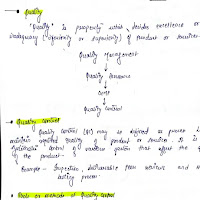Quality Control Method, Definition, CGMP, Objective, Function
The description for the quality control method, definition, CGMP, objective, and function should go here in an HTML format. Provide an overview of the key elements and their significance.
Detailed Explanation
Quality control (QC) is a critical component in ensuring that products meet specific standards and regulations before they reach consumers. This method involves monitoring and verifying the production process to identify and correct defects. QC includes defining the standards of quality, adhering to Current Good Manufacturing Practices (CGMP), and achieving the objectives of customer satisfaction and regulatory compliance.
The key functions of QC include testing raw materials, intermediates, and final products to ensure conformity to specifications, maintaining records for traceability, and implementing corrective actions to address non-compliance. CGMP guidelines are designed to ensure that pharmaceutical products are consistently produced and controlled according to quality standards. These practices focus on areas such as hygiene, process validation, and quality assurance.
Objectives of QC involve ensuring product safety, efficacy, and compliance with legal requirements. Proper implementation of QC methods ensures minimal waste, cost efficiency, and the delivery of high-quality products to customers.
Info!
If you are the copyright owner of this document and want to report it, please visit the copyright infringement notice page to submit a report.

